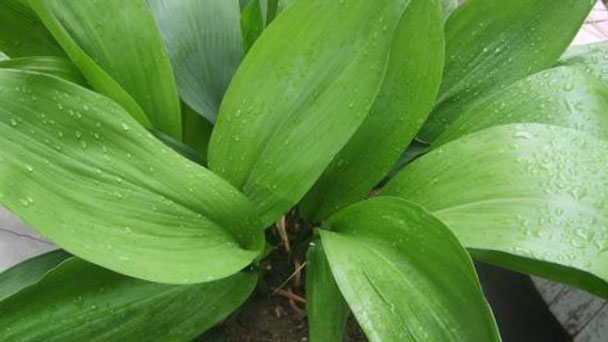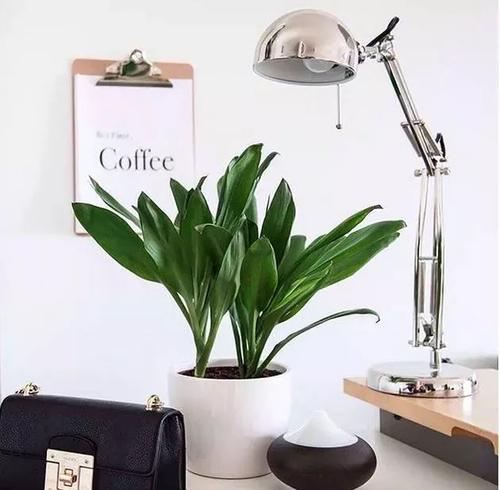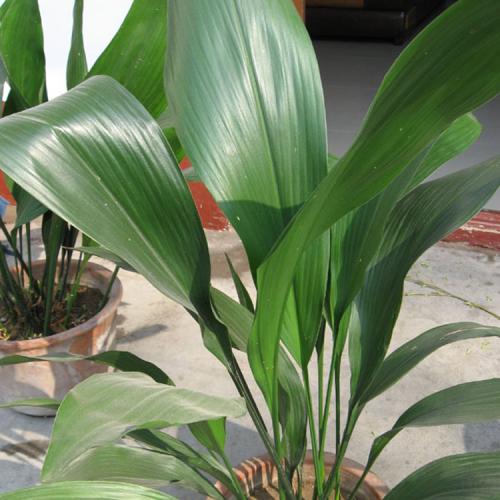How to grow and care for cast-iron plants
Written by Maggie
Sep 09 2021

How to grow and care for cast-iron plants? In fact, if you want to grow cast-iron plants well, you must have some understanding of the growth habits of cast-iron plants. Now, let’s look at how to grow and care for cast-iron plants.
1. Soil care for growing cast-iron plants
Cast-iron plants require loose, well-drained, and fertile slightly acidic sandy soils. When we grow and care for cast-iron plants, potted soils can be made from an equal mix of leaf - rot, peat, and garden soil.
2. Lighting care for growing cast-iron plants
Cast-iron plants are not cold resistant, but prefer warm environments. Therefore, when we grow and care for cast-iron plants, it is necessary to have sufficient sunlight for maintenance of cast-iron plants, but not to put them in direct sunlight. Especially in summer, flower friends should not expose cast-iron plants to strong sunlight.
In winter, when the outside temperature is low, flower friends are advised to move the cast-iron plant indoors for maintenance, otherwise it is easy to be frostbitten.
3. Watering care for growing cast-iron plants
Although Cast - iron plants prefer a humid environment, also does not represent we can water more unscrupulous. When we grow and care for cast-iron plants during the growing season, fully watering, and keep the soil moist state, suggest another flower friends to Cast - iron plant foliar spray humidifying, and budding grow new leaves, usually in the autumn after water quantity can be appropriately reduced.
4. Fertilization care for growing cast-iron plants
Cast-iron plants are relatively fat. Generally, cast-iron plants can be fertilized once or twice a month during the growing season. When we grow and care for cast-iron plants after the growing season, fertilizer should be applied once every two months or so.
Spring and summer are the peak seasons for the growth of cast-iron plants. When we grow and care for cast-iron plants, it is suggested that flower friends can apply liquid fertilizer once or twice a month to ensure the beautiful and bright leaves.

Cast-iron Plant - Most Common House Plant
5. Growing cast-iron plants care for leaf tips yellowing
Excessive or insufficient light, too much watering, and too much fertilization can cause the leaf tips of cast-iron plants to turn yellow. If this is caused by improper light, it is necessary to give the plant a moderate amount of low light, and then put it in a cool and ventilated place. If water and fertilizer are caused by improper, proper watering, reasonable fertilization, regular disinfection and sterilization, prevention of diseases and insect pests. The following are details of Growing cast-iron plants care for leaf tips yellowing.
Proper lighting
When the sun is too strong, the leaves of cast-iron plants get sunburned and the tips start to turn yellow. Without enough light, cast-iron plants can't photosynthesize, lack nutrients, and their leaf tips turn yellow. Cast-iron plants like warm and wet, like astigmatism, plants should be placed in a cool and ventilated environment to grow. When we grow and care for cast-iron plants, give the plant a proper amount of low light, do a good job of sun protection to avoid direct sunlight.
Watering
Cast iron plants are afraid of flooding, rain or overwatering, which can lead to low water in the pot and root rot. This can affect the absorption of nutrients by the roots. Lack of nutrients can turn the leaves yellow. When we grow and care for cast-iron plants, if the basin floor water, to timely pour out the excess water, put the flowerpot in a cool and ventilated place, if more serious, need to change the pot treatment.
Fertilization
Too much or too much fertilizer will burn the root system of cast-iron plants, causing them to rot, which will affect the growth of the plant and lead to yellowing of the leaf tips. When we grow and care for cast-iron plants, if the fertilizer is too much, you can dilute it with proper watering. If the situation is more serious, the fertilizer is too thick, and you need to replace the soil in the basin. Cast-iron plants do not require high fertilizer, usually about 50 days to apply fertilizer once.
Environment
Cast-iron plant before planting, we can choose loose and breathable acid soil, conducive to the growth of plants. When we grow and care for cast-iron plants, old leaves that are naturally yellow should be pruned away in time.Long-term maintenance of environmental ventilation, regularly spray the plant chlorothalonil or carbendazim solution for disinfection, can effectively prevent anthrax, gray mold and leaf spot disease. More About Cast Iron plant propagation.

Latest Updated
- Benefits of Bugleweed - 7 Science-backed Health Benefits
- Bugleweed Dangers & Side Effects - Is It Poisonous?
- How to Plant Evergreen Trees - What You Should Know
- When to Plant Evergreens - Grow Guide for Evergreen Trees
- 12 Wonderful Evergreen Shrubs for Your Garden
- 12 Popular Evergreen Plants with Pictures for Beginners
- When And How To Prune A Lilac Bush Like a Pro
- How to Grow & Care for Lilac Vine (Hardenbergia Violacea)
- Japanese Lilac Tree (Syringa Reticulata) Care & Propagation Guide
- Shumard Oak Pros and Cons - What to Know
Popular Articles
- Winter maintenance of Antirrhinum Majus
- How to Grow Terminalia Mantaly Tree
- How to Grow and Care for Crossostephium Chinense
- How to grow Antirrhinum Majus in spring
- Peristeria Elata (Dove Orchid) Profile: Info & Care Guide
- Underwatered Snake Plant (Sansevieria Trifasciata) - Signs And How To Fix
- How to Care for Brazilian Jasmine Plant (Mandevilla Sanderi)
- How to Grow & Care for Graptopetalum Purple Delight in Summer
- Rosa Chinensis (China Rose): Plant Growing & Care Tips
- How to Care for Baby Sun Rose (Aptenia Cordifolia)